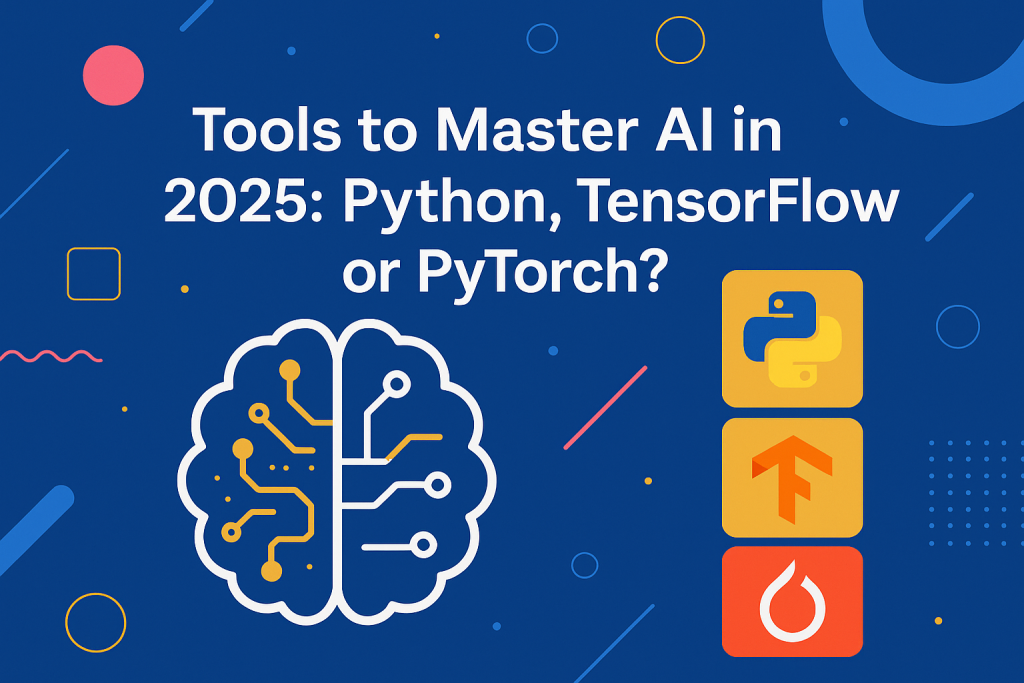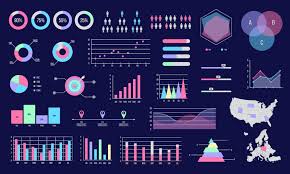
Tools to Master AI in 2025: Python, TensorFlow or PyTorch?
1. Introduction
As the world dives deeper into the AI revolution, 2025 is shaping up to be a pivotal year for anyone entering or advancing in the artificial intelligence field. Whether you’re an aspiring AI engineer, a data scientist, or a tech enthusiast, choosing the right tools to master is no longer optional—it’s essential.
The right framework can drastically impact your productivity, scalability, and career growth. Among the sea of options, Python, TensorFlow, and PyTorch remain the most powerful and relevant. But which one should you focus on in 2025? Let’s break it down.
2. Why Python Remains the Backbone of AI
When it comes to Python for AI, it’s not just a trend—it’s a necessity. Python continues to dominate the AI and machine learning space due to its intuitive syntax, vast ecosystem, and ever-growing community.
With libraries like NumPy, Pandas, Scikit-learn, and Matplotlib, Python bridges data science with software engineering. It powers everything from small experiments to large-scale AI systems. Its readability and flexibility make it the go-to language for both beginners and experts.
Why it matters in 2025:
- Fast prototyping
- Compatibility with all major ML frameworks
- A vibrant open-source community and continuous development
If you’re starting your AI journey, Python in machine learning should be your first checkpoint.
3. TensorFlow in 2025: Where It Stands
Since its launch, TensorFlow has evolved into a full-scale machine learning ecosystem, backed by Google. In 2025, it continues to be a dominant force, especially for production-level deployment.
TensorFlow 2.x makes it easier than ever to build, train, and deploy ML models. With Keras as its high-level API, built-in AutoML tools, and support for TensorFlow Lite, it’s tailored for scalable applications—from servers to smartphones.
Pros:
- Enterprise-grade performance
- Excellent for deployment
- GPU/TPU support and mobile-friendly tools
Cons:
- Steeper learning curve for beginners
- More verbose than PyTorch
Whether you’re comparing TensorFlow vs PyTorch or seeking a robust deployment-ready tool, TensorFlow is still a strong contender in 2025.
4. PyTorch in 2025: The Researcher’s Choice
PyTorch has become the top choice in the research community—and for good reason. In 2025, it continues to lead due to its dynamic computation graph and user-friendly syntax.
Its integration with Hugging Face, OpenAI, and state-of-the-art AI libraries allows researchers and developers to experiment quickly and iterate faster. PyTorch is also increasingly adopted in production settings, thanks to improvements in deployment tools.
Why it stands out:
- Intuitive and Pythonic syntax
- Excellent for debugging and model experimentation
- Native support for advanced deep learning architectures
Searches like “PyTorch for deep learning” and “PyTorch vs TensorFlow” are trending because of PyTorch’s dominance in cutting-edge NLP, computer vision, and generative AI research.
5. Python vs TensorFlow vs PyTorch: Feature Comparison Table
| Feature | Python | TensorFlow | PyTorch |
| Ease of Use | ✅ Very Easy | ❌ Moderate | ✅ Easy |
| Speed | ⚠️ Depends on Library | ✅ Optimized | ✅ Optimized |
| Community Support | ✅ Extensive | ✅ Extensive | ✅ Rapidly Growing |
| Documentation | ✅ Clear & Abundant | ✅ Strong | ✅ Excellent |
| Scalability | ⚠️ Limited (standalone) | ✅ High | ✅ Medium–High |
| Best Use Case | Scripting & analysis | Deployment & production | Research & deep learning |
6. Which Tool Should You Learn First in 2025?
For beginners:
Start with Python, then move on to PyTorch or TensorFlow depending on your area of interest.
For data scientists:
Learn Python with TensorFlow for scalable ML workflows and production environments.
For researchers or ML engineers:
Dive into PyTorch for flexible experimentation and research-focused development.
While TensorFlow has a steeper learning curve, it shines in production-level deployment. PyTorch offers a smoother entry and better flexibility for experimentation, making it ideal for academic and innovation-driven environments.
7. Top AI Projects You Can Build with Each Tool
🔹Python:
- Text summarizer using NLP
- Data visualization and analytics dashboards
- Automated web scraping pipelines for ML
🔹TensorFlow:
- Real-time face detection app
- Voice recognition assistant
- Deployable mobile AI tools using TensorFlow Lite
🔹PyTorch:
- Custom image captioning model
- Transformer-based sentiment analysis
- GAN-powered generative art
8. Future Trends: What to Expect Beyond 2025
- No-code AI tools will become more prominent, simplifying prototyping and deployment.
- TensorFlow and PyTorch may converge, offering hybrid benefits for research and production.
- Python alternatives, such as Julia or Rust, may emerge for performance-intensive tasks—but Python will still dominate in 2025.
Adapting to these trends ensures that your AI skills remain relevant and competitive.
9. Conclusion
In 2025, there’s no one-size-fits-all AI tool.
- Start with Python to build a strong foundation.
- Choose TensorFlow if you’re focusing on deployment or enterprise-grade systems.
- Opt for PyTorch if you’re in research, experimentation, or cutting-edge model development.
The key is to master the right tool for your specific goals and workflow.
🔗 Explore further:
- How to Build Your First AI Model with Python: A Beginner’s Guide
- PyTorch Image Captioning: A Step-by-Step Guide
- Master Full Stack AI
Stay connected with us on HERE AND NOW AI & on

